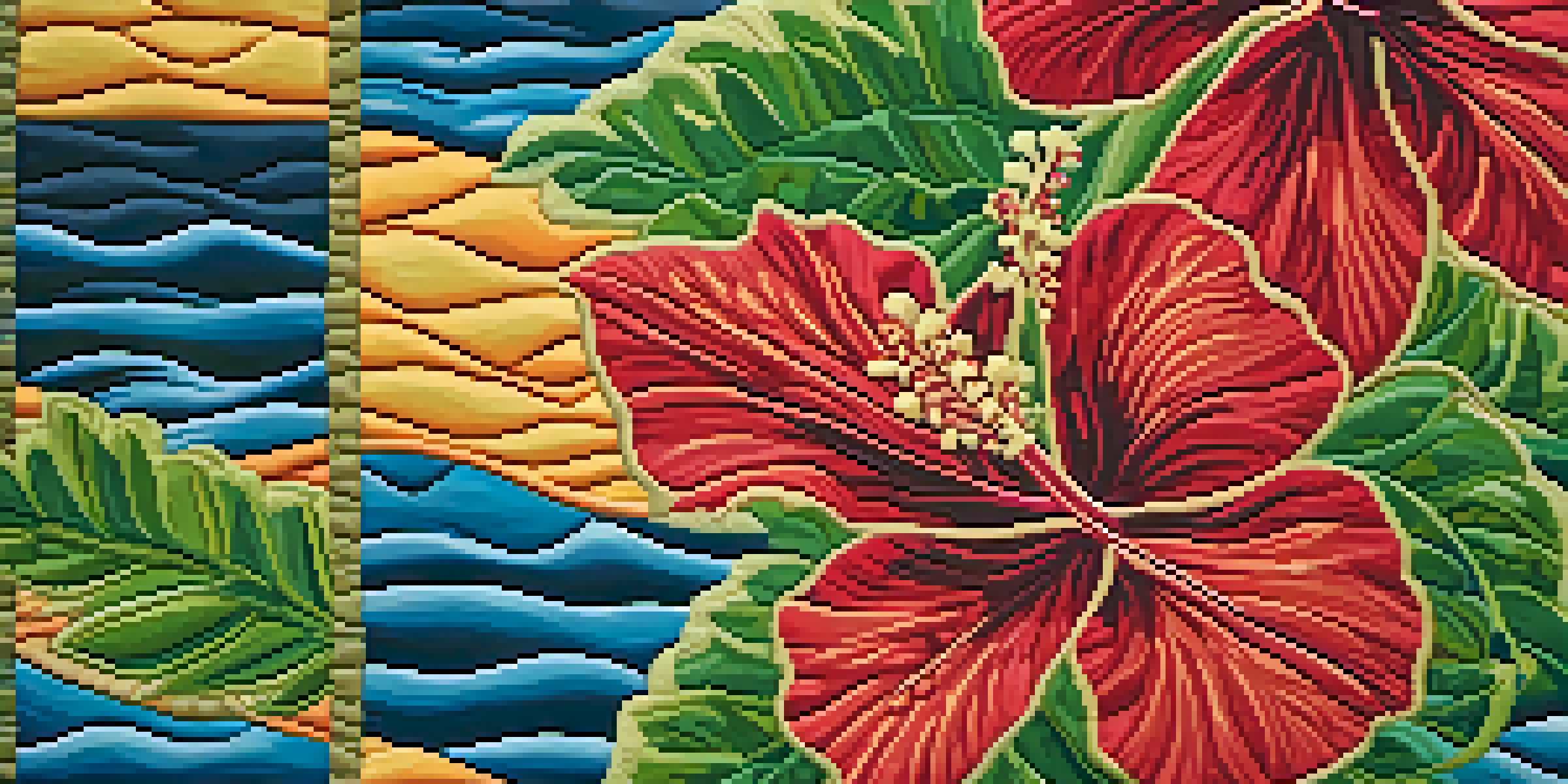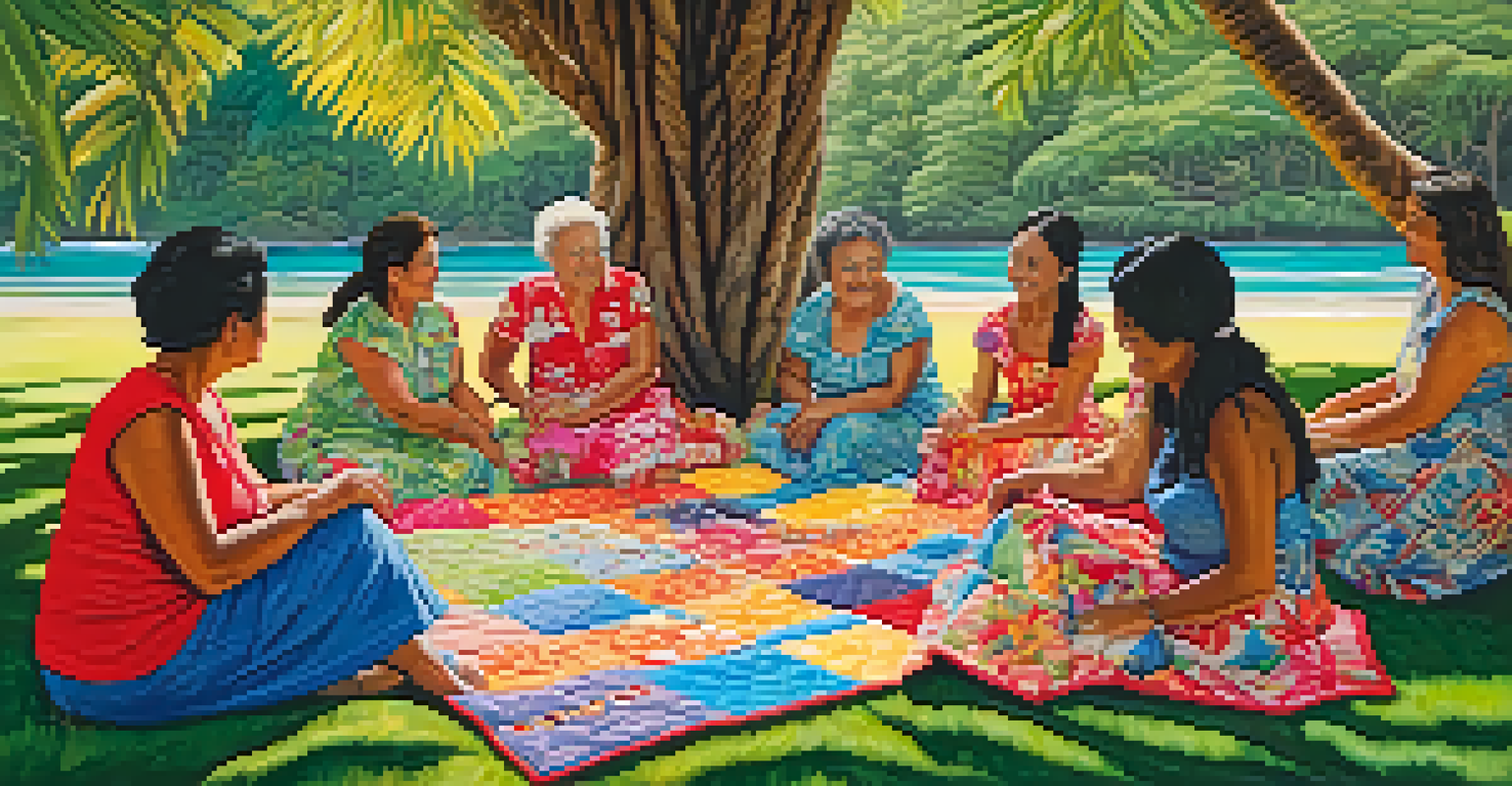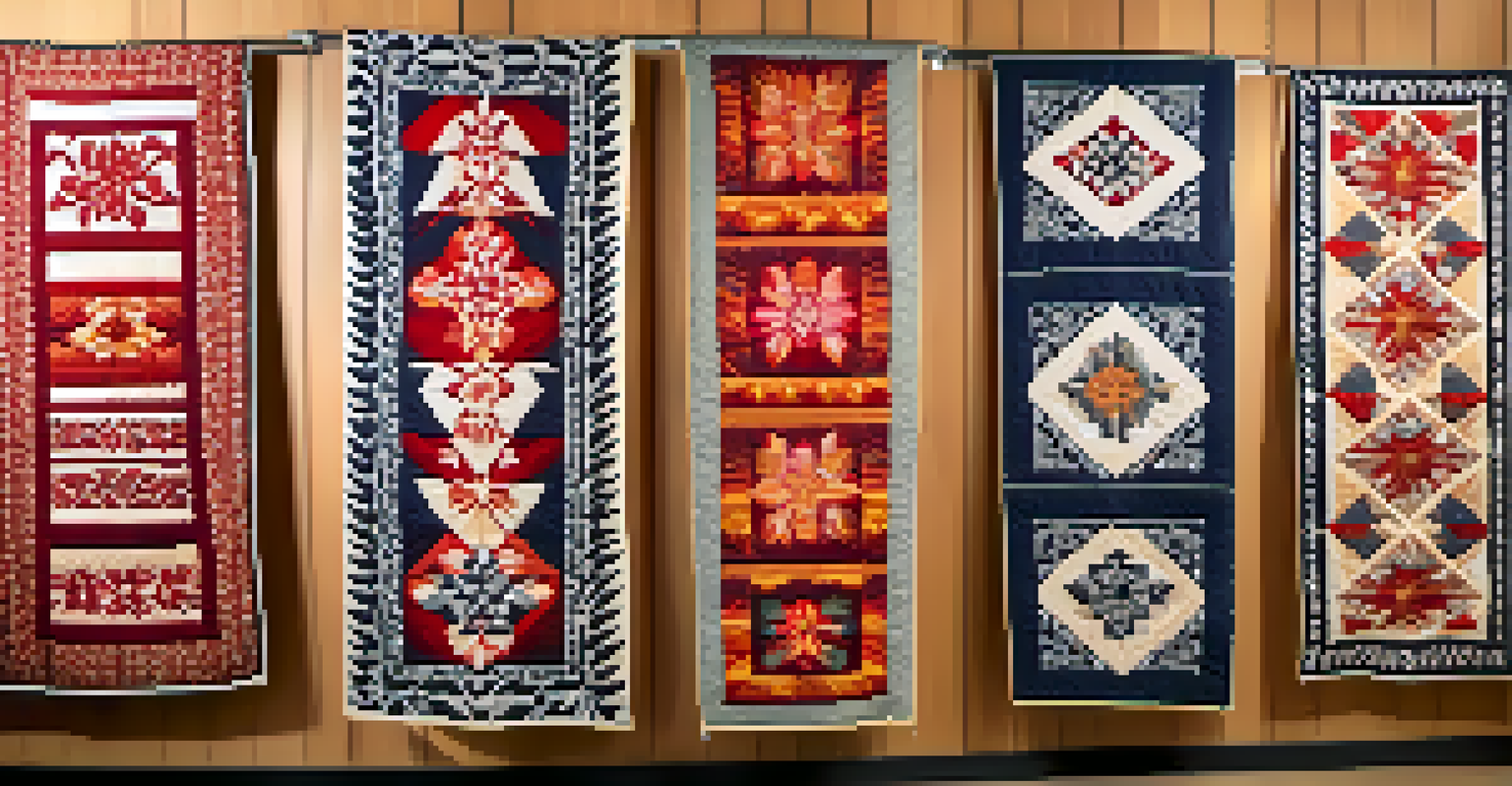Hawaiian Quilting Patterns: Symbolism and Meanings Unveiled

Introduction to Hawaiian Quilting and Its History
Hawaiian quilting is more than just a craft; it's a vibrant expression of culture and heritage that dates back to the early 19th century. Originating from the Polynesian tradition, this quilting style has evolved to incorporate unique designs and techniques that reflect the islands' natural beauty and rich history. The artistry involved in Hawaiian quilts showcases the skill and creativity of the quilters, who often draw inspiration from the lush landscapes and vibrant flora of Hawaii.
Quilting is a way of telling your story without saying a word.
One of the most fascinating aspects of Hawaiian quilting is its connection to storytelling. Each quilt is often a narrative woven through fabric, representing the values, beliefs, and experiences of the quilter. These quilts serve as a historical record, preserving the stories of the Hawaiian people for future generations to cherish and understand.
As we delve deeper into Hawaiian quilting patterns, we’ll uncover the symbolism and meanings behind these intricate designs. From the use of natural elements to the incorporation of cultural motifs, each quilt tells a story that is both personal and communal.
The Significance of Nature in Hawaiian Quilting Patterns
Nature plays a crucial role in Hawaiian quilting, with many patterns inspired by the surrounding environment. Common motifs include flowers, leaves, and waves, each carrying its own meaning. For instance, the hibiscus flower often symbolizes beauty and the spirit of Aloha, while the sea waves can represent the connection to the ocean and its life-giving properties.

These natural elements not only add aesthetic appeal to quilts but also serve as a reminder of the deep-rooted relationship between Hawaiians and their land. Much like the islands themselves, the patterns reflect a harmonious balance between artistry and nature, illustrating the importance of sustainability and respect for the environment in Hawaiian culture.
Cultural Heritage in Every Quilt
Hawaiian quilting serves as a vibrant expression of culture, preserving stories and values through intricate patterns and designs.
By incorporating these natural motifs into their work, quilters honor their heritage and celebrate the beauty that surrounds them. This connection to nature enhances the emotional resonance of each quilt, making it a cherished piece of art that carries deep significance.
Common Motifs and Their Symbolic Meanings
In Hawaiian quilting, specific motifs are frequently used, each with its own unique symbolism. For example, the 'Kalo' or taro plant symbolizes life and sustenance, an essential crop in Hawaiian culture. Similarly, the 'Pikake' flower, named after the jasmine, represents love and romance, often found in wedding quilts to signify unity and commitment.
Art is not what you see, but what you make others see.
Another popular motif is the 'Maui' motif, reminiscent of the islands' legendary demigod. This design not only showcases the rich mythology of Hawaii but also serves to inspire strength and courage among those who admire it. Each motif chosen for a quilt reflects the values and stories that the quilter wishes to convey, making the piece deeply personal.
As these motifs are stitched into the fabric, they transform into a visual language of sorts, telling tales of love, resilience, and connection to the land. This layering of meaning is what makes Hawaiian quilts so special, as they are imbued with the quilter's intentions and emotions.
The Art of Appliqué in Hawaiian Quilting
Appliqué is a prominent technique used in Hawaiian quilting, where a fabric pattern is sewn onto a contrasting background. This method allows for intricate designs and vivid colors, creating a striking visual effect. The process of appliqué requires a high level of skill and precision, as each piece must be carefully cut and stitched to create the desired pattern.
Traditionally, quilters would use a single piece of fabric with a bold design, cutting away the background to reveal the patterns beneath. This unique approach not only highlights the beauty of the fabric but also emphasizes the significance of the design itself. The contrast between the appliqué and the background fabric further enhances the quilt's visual appeal.
Nature's Influence on Patterns
The natural environment heavily inspires Hawaiian quilting motifs, symbolizing the deep-rooted relationship between the people and their land.
Through the art of appliqué, quilters are able to express their creativity while paying homage to their cultural roots. This technique serves as a bridge between the past and present, allowing artisans to create contemporary pieces that still honor traditional practices.
The Role of Color in Hawaiian Quilting
Color plays a vital role in Hawaiian quilting, with each hue chosen for its specific significance. Bright, vibrant colors are often used to evoke feelings of joy and celebration, reflecting the lively spirit of the islands. For instance, rich greens may symbolize growth and renewal, while deep blues can represent the ocean and sky, grounding the quilt in its natural surroundings.
The choice of color can also convey deeper meanings, with certain shades associated with specific cultural beliefs or events. For example, red is often linked to love and passion, making it a popular choice for quilts created for weddings or special occasions. By carefully selecting colors, quilters are able to enhance the emotional impact of their work.
As viewers engage with these colorful quilts, they not only appreciate the beauty of the designs but also connect with the stories and meanings behind each choice. This interplay of color and symbolism creates a rich tapestry of emotions and narratives that resonate with both the quilter and the observer.
The Cultural Significance of Hawaiian Quilting Today
Today, Hawaiian quilting remains a vital part of Hawaiian culture, serving as a means of preserving traditions while also adapting to modern influences. Quilters continue to pass down techniques and stories to younger generations, ensuring that this art form thrives. As a result, quilting circles have become community hubs where individuals can share their passion, learn from one another, and celebrate their heritage.
In recent years, Hawaiian quilting has gained recognition beyond the islands, with exhibitions and workshops attracting enthusiasts from around the world. This exposure has helped to elevate the craft, allowing quilters to showcase their skills and share their stories with a broader audience. Such interactions foster a deeper understanding of Hawaiian culture and promote appreciation for the artistry involved in quilting.
Community and Modern Adaptation
Today, Hawaiian quilting continues to thrive by blending traditional techniques with modern influences, fostering community connections and cultural appreciation.
By embracing both tradition and innovation, Hawaiian quilting has evolved while remaining true to its roots. This dynamic nature of the craft ensures that it continues to resonate with people, both within Hawaii and beyond, encouraging a sense of connection and community.
Conclusion: The Legacy of Hawaiian Quilting Patterns
Hawaiian quilting patterns are a beautiful blend of artistry, culture, and storytelling. Each quilt carries with it a legacy that speaks to the values, beliefs, and experiences of the Hawaiian people. As we explore the intricate designs and their meanings, we uncover a rich tapestry of history that is both personal and communal.
The symbolism embedded in these quilts serves as a reminder of the importance of nature, community, and cultural heritage. Through their craft, quilters not only preserve their traditions but also share their stories with the world. This connection between past and present is what makes Hawaiian quilting so special, ensuring that its legacy continues for generations to come.

As you engage with Hawaiian quilts, take a moment to appreciate the stories they tell and the artistry they embody. By understanding the meanings behind the patterns, you gain a deeper appreciation for this unique cultural expression and the rich history that it represents.